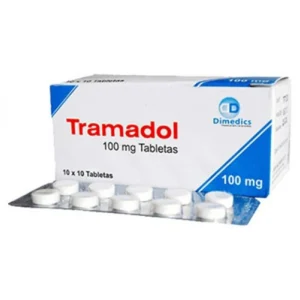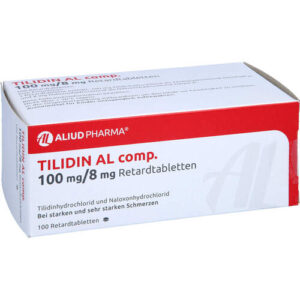Buy Fentanyl M30 Tablets Online
Fentanyl is a powerful synthetic opioid analgesic that is similar to morphine but is 50 to 100 times more potent. It is commonly used to treat patients with severe pain, especially after surgery or those with chronic pain who are physically tolerant to other opioids. This guide will explore fentanyl’s other names, dosages, common side effects, and overall benefits, providing a thorough understanding of this potent medication.
Fentanyl ist ein starkes synthetisches Opioid-Analgetikum, das Morphin ähnelt, aber 50- bis 100-mal wirksamer ist. Es wird häufig zur Behandlung von Patienten mit starken Schmerzen eingesetzt, insbesondere nach einer Operation oder bei Patienten mit chronischen Schmerzen, die andere Opioide körperlich vertragen. In diesem Leitfaden werden die anderen Namen, Dosierungen, häufigen Nebenwirkungen und allgemeinen Vorteile von Fentanyl untersucht und ein umfassendes Verständnis dieses wirksamen Medikaments vermittelt.
Other Names and Forms
Fentanyl is known by various brand names and formulations, which allow for different methods of administration and tailored pain management. Some of the common names and forms include:
- Duragesic: A transdermal patch that delivers fentanyl through the skin over a period of time.
- Actiq: A fentanyl lozenge on a stick, often referred to as a “lollipop,” used for breakthrough pain.
- Sublimaze: An injectable form used in surgical settings.
- Abstral: A sublingual tablet that dissolves under the tongue.
- Fentora: A buccal tablet that is placed between the gum and cheek.
- Lazanda: A nasal spray formulation.
These variations allow for flexibility in treatment plans, accommodating different patient needs and preferences.
Dosage Guidelines
The dosage of fentanyl must be carefully tailored to the individual, taking into account factors such as the patient’s current opioid use, the severity of the pain, and the patient’s response to treatment. Due to its potency, dosing must be done with caution to avoid overdose and severe side effects.
For Chronic Pain
- Transdermal Patch (Duragesic):
- Initial dose: For opioid-naïve patients, a lower starting dose of 12.5 to 25 mcg/hour is recommended.
- Maintenance dose: Adjustments should be made based on the patient’s response, typically in increments of 12.5 to 25 mcg/hour every 72 hours.
- Maximum dose: There is no defined maximum, but doses above 100 mcg/hour should be carefully managed by a specialist.
- Lozenge (Actiq):
- Initial dose: Typically starts at 200 mcg for opioid-tolerant patients.
- Maintenance dose: Adjusted based on efficacy and tolerance, with common doses ranging from 200 mcg to 1600 mcg.
- Injectable (Sublimaze):
- Used in controlled medical settings for anesthesia and severe pain management. Dosages vary widely based on the procedure and patient needs.
- Sublingual Tablet (Abstral):
- Initial dose: Starts at 100 mcg for opioid-tolerant patients.
- Maintenance dose: Adjusted as necessary, typically in increments of 100 mcg.
- Buccal Tablet (Fentora):
- Initial dose: Typically 100 mcg for opioid-tolerant patients.
- Maintenance dose: Adjustments made in increments of 100 mcg.
- Nasal Spray (Lazanda):
- Initial dose: Starts at 100 mcg for opioid-tolerant patients.
- Maintenance dose: Adjustments based on patient response, with common doses ranging from 100 mcg to 800 mcg per spray.
Common Side Effects
While fentanyl is highly effective in pain management, it can cause a range of side effects. Awareness of these effects is crucial for managing them effectively and seeking medical attention when necessary.
Mild to Moderate Side Effects
- Drowsiness: Common and can affect the ability to perform tasks requiring alertness.
- Dizziness: May cause a feeling of lightheadedness.
- Nausea and Vomiting: Particularly during the initial days of treatment.
- Constipation: A frequent side effect of opioid medications, manageable with dietary adjustments and medications if needed.
- Sweating: Increased sweating can occur.
- Dry Mouth: A common but manageable side effect.
- Headache: Can occur but is generally mild.
Severe Side Effects
- Respiratory Depression: A serious risk, particularly if the medication is taken in higher doses than prescribed. This can be life-threatening and requires immediate medical attention.
- Severe Allergic Reactions: Symptoms include rash, itching, swelling, severe dizziness, and trouble breathing.
- Addiction and Dependence: Fentanyl has a high potential for abuse and dependence, requiring careful monitoring by a healthcare provider.
- Serotonin Syndrome: Rare but serious, especially if taken with other medications that increase serotonin levels.
- Heart Problems: Including slow heart rate and low blood pressure.
Overall Benefits
Despite the potential side effects, fentanyl offers several significant benefits, especially when used correctly under medical supervision.
Benefits in Pain Management
- Effective Pain Relief: Fentanyl is highly effective in managing severe pain, providing relief for patients with chronic pain conditions or those recovering from surgery.
- Rapid Onset of Action: Especially in formulations like the lozenge and injectable forms, fentanyl can provide quick relief from acute pain.
- Long-Lasting Relief: The transdermal patch provides continuous pain relief over an extended period, typically 72 hours, which can improve patient compliance and convenience.
- Versatility in Administration: Various formulations allow healthcare providers to tailor treatment plans to individual patient needs, ensuring effective pain management.
Mechanism of Action
Fentanyl works by binding to the body’s opioid receptors, which are found in areas of the brain and spinal cord that control pain and emotions. When fentanyl binds to these receptors, it reduces the perception of pain and the emotional response to pain, providing significant relief. It also increases the pain threshold, allowing patients to tolerate higher levels of pain without discomfort.
Comparisons with Other Opioids
Fentanyl vs. Morphine
- Potency: Fentanyl is significantly more potent than morphine, which means lower doses are needed to achieve the same effect.
- Onset and Duration: Fentanyl generally has a quicker onset of action and shorter duration of effect compared to morphine.
- Side Effect Profile: Both have similar side effects, but fentanyl’s higher potency can increase the risk of severe side effects if not properly managed.
Fentanyl vs. Oxycodone
- Potency: Fentanyl is much more potent than oxycodone.
- Usage: Fentanyl is often reserved for severe pain in patients who are opioid-tolerant, whereas oxycodone can be used for a broader range of pain severities.
- Formulations: Oxycodone is available in fewer formulations compared to fentanyl.
Conclusion
Fentanyl is a powerful tool in the management of severe pain, offering effective relief through various formulations tailored to specific patient needs. While it carries the risk of side effects and potential for abuse, its benefits in improving pain and enhancing quality of life are significant when used correctly under medical supervision. Patients should always follow their healthcare provider’s instructions, report any side effects, and discuss any concerns to ensure the safe and effective use of this medication. With proper management, fentanyl can provide substantial relief and contribute to better overall well-being.





Reviews
There are no reviews yet.